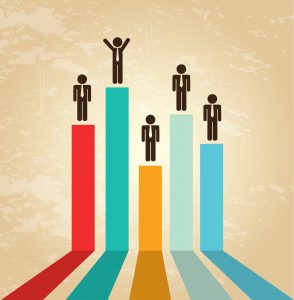
09 Aug Facial Recognition: Why It Is Important To Your Business
The technology of facial recognition is growing in popularity and adoption. This is particularly true among businesses, which see the value of this technology and are exploring ways to implement it in their operations. This article will explain why companies should consider implementing facial recognition software and services in their businesses, as well as the different uses for this technology that is becoming more common among businesses. Read on to learn more.
What is Facial Recognition Software?
Facial recognition software is designed to detect and recognize an individual based on their face. This software may be used for identification, authentication, or analysis, and it can identify people in images or videos and track people’s movements through a facility. Facial recognition is often used in law enforcement but is also common in business settings and other industries. Facial recognition software uses algorithms to compare images of faces to a database of known faces. This technology can be applied to many different areas, including hiring practices and employee monitoring. It can also be used to measure the success of marketing campaigns by recognizing the reactions of individuals when they see your advertisements. Finally, facial recognition can be used to track attendance, monitor entry, and exits to a facility, or control security access.
Why Is Facial Recognition Important To Your Business?
Facial recognition technology offers a number of benefits for businesses of all types and sizes. Most importantly, facial recognition time attendance systems can be used to track attendance at work, whereas this is often a challenge without this technology. Additionally, face recognition can be used to identify visitors who enter the business premises, which is particularly useful for larger organizations with multiple entrances. If your employees are using the facial recognition software on their computer or mobile device, it can be used to track their time at work, which can help to increase the accuracy of time tracking and ease the burden on employees to calculate their hours. Finally, facial recognition can be used to identify individuals in photos or videos, which can help businesses to solve cases of false advertising, theft of intellectual property, or other issues.
3 Ways Businesses Are Using Facial Recognition
– Hiring Practices – Facial recognition can help businesses identify individuals who are interviewing for a job, which can be particularly useful for companies that receive many applications for employment. This software can help to ensure that the right individuals are being interviewed, while also reducing the likelihood that an individual is being falsely represented during the hiring process.
– Employee Monitoring – Facial recognition can be used to track employee attendance and monitor the length of time that individuals spend in some regions of the workplace. This can be helpful for companies that want to track whether employees are following the appropriate safety procedures or remaining within the facility’s correct areas. – Marketing Campaigns – Companies can use facial recognition to track the success of certain marketing campaigns by using photos or videos that show individuals the advertisements. This can help to measure the reaction of individuals, which can help determine the value of a given ad campaign.
2 Keys To Success When Using Facial Recognition Software
– Accuracy – The first key to success is facial recognition software accuracy. In order for this technology to be effective, it must be able to accurately identify individuals and match them with information in the database. Without this accuracy, the software will be ineffective and, in some cases, even harmful to the organization. – Security – The second key to success when implementing facial recognition software is security. While this technology can be helpful in many ways, it can also open the door to misuse if the information is not kept secure. In order to protect sensitive information, as well as the rights of employees, businesses should carefully consider security measures when using facial recognition software.
Problems With Facial Recognition Technology
Facial recognition software is not without its challenges, and companies must keep these in mind when deciding whether to implement it and how:
- The challenge is to collect photos or videos of individuals who will be tracked. This may not be easy for some organizations.
- There is the issue of maintaining a database of photos or videos of individuals, including hiring new employees. This can be tedious and time-consuming, and collecting photos or videos in certain settings, such as outdoors, may be challenging.
- There is a matter of accuracy when matching faces to the database.
- If the software is too strict, it may misidentify individuals.
Facial Recognition Time Clock Software
Facial recognition time clock software is designed to recognize an individual’s face and mark the person as having entered the building or having clocked in for work. These time clock systems can be integrated with other time tracking software, such as payroll, to ensure that it accurately records the time individuals spend at work. When facial recognition time clock software is used, employees are prompted to scan their faces at the beginning and end of their shifts. This information is then recorded in the software and matched with the employee’s work hours. Time clock software with facial recognition functionality is helpful for businesses that have many employees who do not use a physical time clock.
Facial Recognition Privacy
While facial recognition software can be helpful in many ways, there are also some privacy concerns associated with it. Organizations need to be aware of these privacy issues and minimize them, such as not using facial recognition software on individuals who have not consented to be monitored. Individuals may also be concerned about how their information is being used, so businesses need to be transparent about using facial recognition software and explain to employees how the information is being used. Additionally, companies should consider implementing a facial recognition privacy policy that outlines how the organization will protect sensitive information and how individuals can request the removal of their images from the database.
Conclusion
Businesses should be aware that facial recognition technology is growing in popularity and is being adopted by many different organizations, including law enforcement agencies. This technology offers a number of benefits for businesses, including the ability to improve hiring practices and employee monitoring, as well as track the success of marketing campaigns. While facial recognition software can be helpful in many ways, there are also some privacy concerns associated with it. It is important for organizations to be aware of these privacy issues and take steps to minimize them, such as not using facial recognition software on individuals who have not consented to be monitored.




